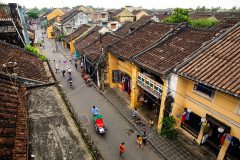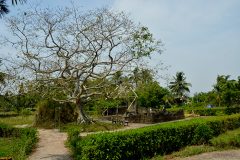From rocky inlets to sandy lagoons, Vietnam’s central coast is perhaps the most striking the nation has to offer. This is an area of great cultural and historical significance, home to fascinating cities both well-traveled and hardly yet explored. For those visiting central Vietnam, these are our favorite cities.
Danang
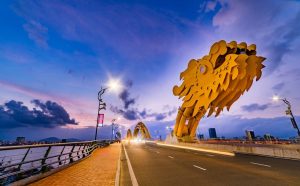
Danang is the nation’s third largest city and a nice alternative to the cultural capital of Hanoi in the north or the economic hub of Saigon in the south. Growing between eastern peaks of the Annamite mountain range and the tranquil waters of the East Sea, this is one Vietnamese city that blends with it’s natural surroundings. For those interested in riding, the Hai Van Pass – perhaps Vietnam’s most famous road – lies just a few kilometers to the north. The spectacularly fun zig-zag of tarmac traverses through lush jungle and massive stone boulders as it skirts the sea.
Danang’s downtown area has transformed in recent years and is now one of the most tourist-friendly in the entire nation. The majority of the action is set on the banks of the Han River. A boardwalk runs for kilometers and is home to a number of great shops, bars and restaurants. On the weekends, the fire breathing Dragon Bridge is a must see.
For those looking to enjoy the sand and sea, Danang and the surrounding area offer some of the country’s best beaches. From the expansive My Khe beach to the secret lagoons and hidden ribbons of gold around Monkey Mountain, there’s a beach for all tastes in Danang.
Hue
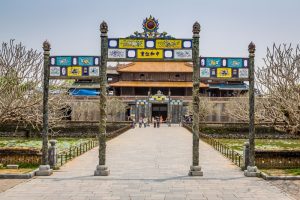
Hue, the nation’s ancient capital, may be the most historically fascinating city in all of Vietnam. Well-preserved temples, pagodas and tombs lie around every corner. There’s so much history here that it’s been named a UNESCO World Heritage Site.
The city’s small size makes it a great stop on any trip along the eastern coast. The backpacker district lies feet from the Perfume River and within walking distance of the ancient citadel. Anyone exploring the region should take at least a day to see the Citadel, Minh Mang Tomb, Khai Dinh Tomb, and Thien Mu Pagoda.
For the food lover, Hue has some of the most complex and artful cuisine in the nation. Dishes are often well spiced with chili. For something different and unique to the region, try a bowl of com hen or rice with baby clams.
Hoi An
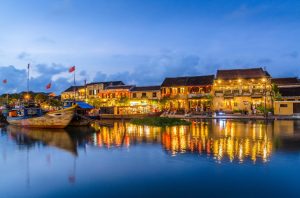
The second UNESCO World Heritage site on our list, Hoi An is one of the nation’s most important tourist destinations. An area once home to Cham people, the small town grew in size and importance between the 15th and 19th centuries, attracting a large number of Chinese and Japanese traders and becoming known internationally as a top tier Asian trading port. As a result, the well-preserved stucco buildings are awash in both Chinese and Japanese influences.
Today, the city has little in the way of an economy beyond tourism. Travelers often spend a few days to a week exploring the romantic alleyways of the old town, hidden beneath the glow of hanging lanterns. Tailors and designers operate storefronts on almost every block, and it’s a traveler’s rite of passage to have something hand-made while passing through.
Dong Hoi
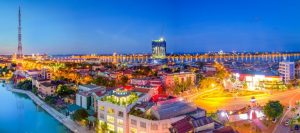
Three hundred miles south of the nation’s capital, Dong Hoi is one of the lesser known cities on our list. The coastal enclave of 160,000 is home to a number of spectacular beaches including The Da Nhay and Bao Ninh, each making a great day trip for anyone visiting the region. Bang Spa, a natural hot spring, is another popular nearby destination amongst travelers.
Dong Hoi is of particular importance due to its proximity to Phong Nha Ke Bang national park. The park, which lies just 30 miles to the west, is Vietnam’s greatest natural treasure and should be seen by any and all tourists. The region’s caves are some of the largest and most fascinating in the entire world.
Quy Nhon
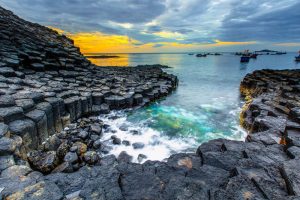
Nestled along the coast halfway between Nha Trang and Hoi An, Qui Nhon is in the midst of a government-planned, tourist-targeted revival. The main beach is one of the cleanest city beaches in Vietnam, hardly developed and very well maintained. A boardwalk shrouded in greenery runs parallel to the ocean. Most tourists visiting the region also head 10km south of the city to Bai Xep beach, which has become famous throughout Vietnam for its natural beauty.


